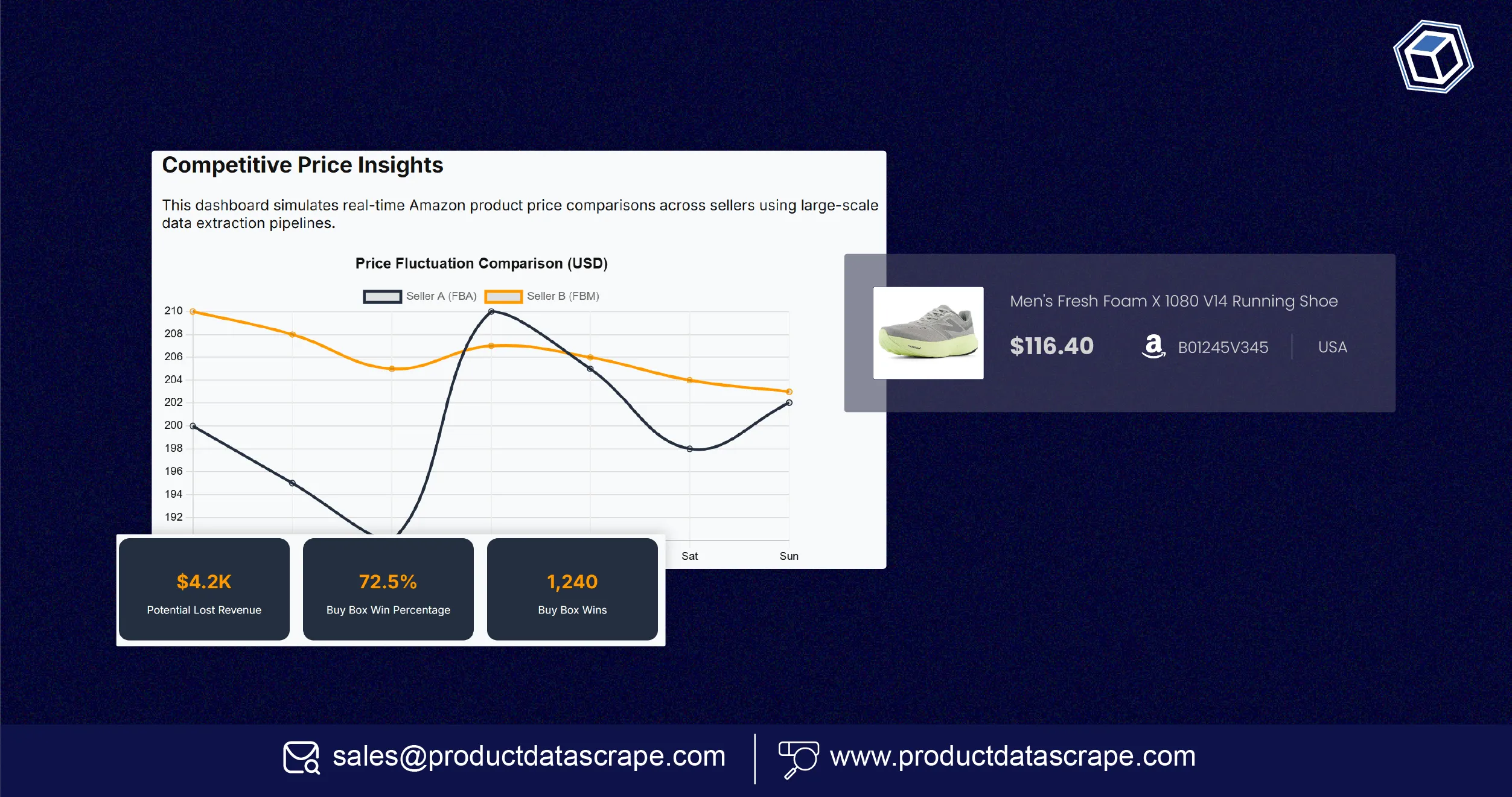
Introduction
In a digital marketplace driven by precision and competition, Amazon price
scraping at scale for analytics has become the cornerstone of pricing intelligence.
With billions of SKUs, frequent price changes, and personalized offers,
Amazon’s pricing ecosystem is both a goldmine and a labyrinth for data analysts and pricing
strategists. Businesses today rely on accurate, timely, and structured pricing data to make
smarter pricing, assortment, and promotion decisions.
However, getting that data is not as simple as running a scraper overnight.
Amazon’s layered infrastructure, bot-detection systems, and dynamic rendering make automated
extraction complex and error-prone.
That’s where specialized web scraping service providers come in — bringing
scalable infrastructure, intelligent proxy management, and compliance frameworks to handle
Amazon’s evolving defenses.
For brands, retailers, and market analysts, web scraping Amazon for price
intelligence enables actionable insights into competitor strategies, Buy Box dynamics, and
pricing trends across geographies. It transforms raw HTML into structured, analytics-ready data
that fuels smarter decision-making.
Amazon Price Scraping: Harder Than It Appears
Amazon’s pricing environment changes thousands of times per minute — sometimes
per second. Dynamic repricing algorithms respond to competitor offers, user behavior, and
inventory signals. When companies attempt to extract this data manually or with generic tools,
they face ever-shifting pages, CAPTCHAs, and blocks.
Unlike static sites, Amazon generates much of its product data dynamically
through JavaScript, meaning simple crawlers often fail to detect real prices. Maintaining
accuracy requires continuous adaptation — a process too time-consuming for small teams.
Enterprise-grade providers handle these complexities through headless browsers, adaptive
parsers, and proxy orchestration.
Large-scale Amazon pricing data collection for analytics allows businesses to
track millions of ASINs efficiently without violating compliance standards. Such setups ensure
that every price is tied to its source, time, and region, creating verifiable datasets that
power pricing optimization models.
With the right web scraping strategy, companies gain not just visibility into
current prices but also trendlines over time, enabling predictive insights that go beyond
reactive price changes.
Why DIY Scripts and Free Tools Fail Quickly?
At first glance, scraping Amazon with open-source tools like Amazon Scraper
Python scripts seems tempting. They work for a few hours, maybe even a day — until IP bans,
throttling, or CAPTCHA loops appear. DIY scrapers aren’t built to handle session persistence,
rotating proxies, or regional variations, all of which are crucial for Amazon.
Once blocked, recovery becomes painful: you lose progress, compromise data
quality, and risk missing critical updates in a fast-moving market. Each fix demands new
engineering time, which adds up fast.
This is why relying solely on free tools for high-volume data extraction is
unsustainable. Managed web scraping solutions use distributed architectures, rotating
residential IPs, and self-healing parsers that automatically adjust to layout changes.
In contrast to short-lived scripts, these solutions deliver clean, ready-to-use
datasets for machine learning and analytics teams. When you need to scrape laptop data from
Amazon for an ML project, scalable infrastructure ensures complete, labeled datasets with
consistent schema — no manual patching or re-scraping.
Professionally managed pipelines free your team from maintenance headaches,
allowing them to focus on deriving insights instead of debugging scrapers.
Struggling with unreliable scrapers? Switch to Product Data Scrape for
accurate, scalable, and compliant Amazon pricing data — start today!
Contact Us Today!
What Professional Web Scraping Services Do Differently?

The difference between DIY scraping and managed web scraping is like comparing
a homemade drone to a satellite. Professional providers don’t just collect data — they guarantee
consistency, compliance, and scale.
Enterprise-level setups combine multiple technologies: rotating proxy pools,
browser automation, and real-time monitoring. Each request is optimized for efficiency and
anonymity, ensuring that scraping activities remain undetected while maintaining high success
rates.
Such systems can handle millions of requests daily, with adaptive load
balancing to avoid detection or blocking. They use structured extraction templates that evolve
automatically as Amazon updates its HTML structure.
When combined with real-time Amazon price scraping for market research, these
capabilities enable near-instant visibility into competitor pricing trends, promotions, and
market fluctuations. Businesses can feed this continuous stream of verified data into pricing
engines, enabling dynamic pricing and rapid decision-making.
By outsourcing scraping operations to experienced providers, brands gain access
to infrastructure, monitoring dashboards, and compliance expertise — turning data collection
into a predictable, scalable function rather than a maintenance burden.
Amazon’s Unique Obstacles Require Expertise
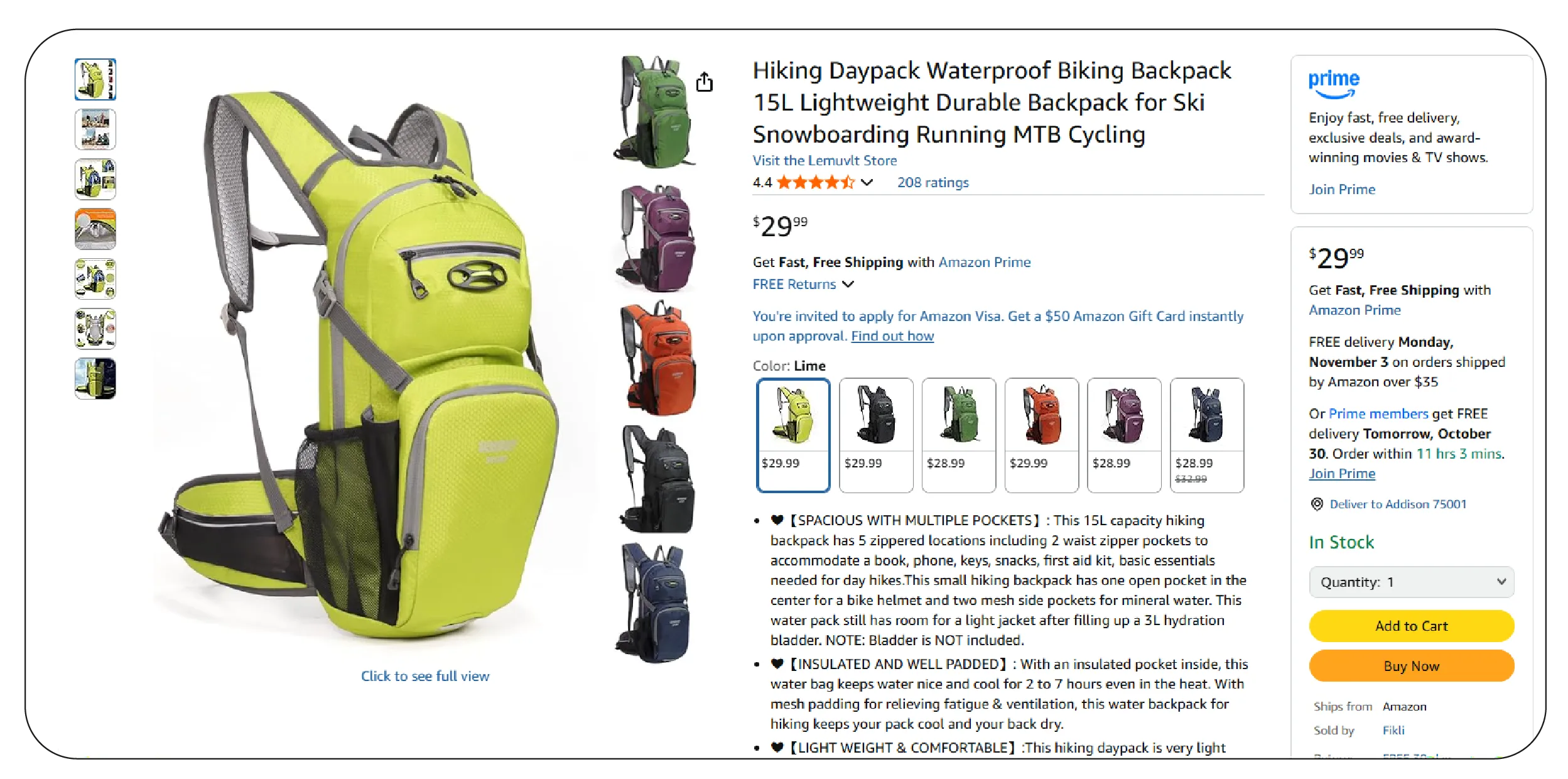
Amazon’s pricing pages are notoriously complex. Between geo-based localization,
A/B tests, and personalized recommendations, no two users always see the same price. That makes
Amazon price scraping at scale for analytics especially challenging.
Professional scraping teams overcome these hurdles with smart browser
automation, session simulation, and real-time validation pipelines. They maintain thousands of
active proxy IPs across countries, ensuring regional coverage and avoiding bias in pricing data.
Even minor HTML changes — like shifting a price container or modifying AJAX
calls — can break poorly designed scrapers. Expert teams monitor such changes continuously,
automatically redeploying parsers when required.
In addition, advanced techniques like headless Chrome rendering and anti-bot
fingerprinting ensure high success rates for web scraping Amazon products for analytics, even
when pages dynamically load after user interaction.
With the right tools, scrapers can extract clean, verified prices from millions
of listings daily — all without violating Amazon’s terms or impacting performance. Such depth of
automation allows data analysts to focus on insights, not maintenance.
Real-World Applications: How Different Users Leverage Amazon Price Data
Different industries extract Amazon pricing data for unique strategic purposes
— from enforcement to analytics. For brands, it’s about maintaining control and consistency. By
continuously monitoring third-party listings, they can identify unauthorized sellers, detect MAP
(Minimum Advertised Price) violations, and protect brand equity. Automated scraping tools allow
them to track product availability, ratings, and competitor offerings across multiple regions.
For retailers, Amazon data acts as a mirror of market behavior. Monitoring
pricing changes helps in adjusting product margins, inventory management, and discount timing.
Retailers use continuous data feeds to respond faster than competitors and optimize promotional
campaigns dynamically.
For analysts and market researchers, historical and real-time datasets uncover
hidden pricing trends and customer demand patterns. With structured data pipelines, they can
train predictive models for forecasting demand, elasticity, and price sensitivity.
This is where scraping Amazon product prices efficiently becomes a
mission-critical capability — transforming unstructured web data into business-ready
intelligence.
By outsourcing data collection to experts, organizations gain access to
verified datasets they can confidently integrate into pricing models, dashboards, and reporting
systems without worrying about data gaps or format inconsistencies.
Unlock actionable insights from Amazon pricing! Partner with Product
Data Scrape to monitor competitors, optimize pricing, and drive smarter
decisions.
Contact Us Today!
Why Scaling Price Scraping Changes Everything?
Collecting prices from a few hundred listings is easy; maintaining accurate
datasets across millions of SKUs daily is where scaling truly matters. Amazon price scraping at
scale for analytics requires not just powerful crawling architecture but also a deep
understanding of how Amazon’s infrastructure behaves under load.
When scaled correctly, scraping pipelines ensure continuous freshness, meaning
your datasets reflect the latest market conditions, promotions, and competitor pricing changes.
Without this level of scale, pricing analytics quickly become outdated and misleading.
A professional provider uses intelligent scheduling systems to prioritize
high-value pages, minimize redundant crawls, and optimize proxy usage for efficiency. This
reduces infrastructure costs while maintaining high accuracy levels.
Integrating scraping pipelines with machine learning models further strengthens
price forecasting and elasticity studies, enabling teams to make proactive adjustments.
In parallel, organizations that scrape data from any e-commerce websites often
apply these scalable architectures beyond Amazon, creating unified datasets for omnichannel
price analytics across major marketplaces and online stores.
Scaling isn’t just about volume — it’s about maintaining speed, reliability,
and compliance across complex, dynamic e-commerce ecosystems.
1. Beyond “Requests per Minute”: The Metric That Actually Counts
Many scraping teams measure success by how fast they can send requests. But for
professional data operations, true performance is measured by cost per valid, verified price —
the metric that determines both efficiency and profitability.
To reach this standard, you must design pipelines that deliver a high ratio of
clean, usable data to total requests sent. This involves managing retries, optimizing
concurrency, and using adaptive logic that detects when a scraper is about to be blocked.
Well-designed architectures can handle billions of requests monthly with
minimal waste. They dynamically adjust scraping intensity based on proxy health, target load,
and error feedback loops.
With structured extraction and data quality audits, each price record becomes
reliable enough for analytics teams to act upon it.
By using frameworks designed to extract Amazon e-commerce product data , teams
can guarantee data accuracy across regions and categories while minimizing resource overhead.
Ultimately, cost-effective scalability ensures pricing teams can operate
continuously without overspending on bandwidth, proxies, or compute cycles — turning data
extraction into a predictable business process.
2. Buy Box Validation: Knowing Which Price to Trust
Amazon’s Buy Box is one of the most influential pricing elements in global
e-commerce. Winning it means higher visibility and conversions — but identifying the true Buy
Box price programmatically is complex.
Different sellers compete for that position, and price alone doesn’t guarantee
the win; factors like shipping time, seller rating, and fulfillment method all play a part.
Scraping systems must identify the right context to determine which offer currently “owns” the
Buy Box.
Advanced scraping workflows detect subtle page variations that mark the
difference between standard listings and Buy Box-winning ones. They then tag and store this
metadata for further analysis.
This process, when automated at scale, ensures you aren’t comparing outdated or
irrelevant offers.
With enterprise-level scraping infrastructure, you can custom e-commerce
dataset scraping to focus specifically on Buy Box visibility, seller distribution, and price
movements across time.
The result: validated, context-aware datasets that support accurate revenue
modeling and competitive response strategies.
3. PA-API vs. Scraping: When to Blend or Bypass
Amazon’s Product Advertising API (PA-API) provides structured data for approved
partners — but its limitations become clear once you need comprehensive, real-time coverage. The
API restricts access to specific products and often updates with delays, meaning that data
freshness is not guaranteed for critical decision-making.
On the other hand, scraping offers full visibility into live listings, dynamic
prices, and availability indicators. The best strategy blends both approaches — using PA-API for
reliable metadata and scraping for immediate price verification and real-time insights.
Modern providers automate this reconciliation process, ensuring both sources
stay synchronized while preserving compliance and data accuracy.
When businesses extract Amazon API product data in parallel with live scraping,
they get the best of both worlds — structured, policy-compliant data enriched by current,
verified price points from Amazon’s front end.
This hybrid model is especially valuable for analytics-driven organizations
that need speed, completeness, and confidence in every data point before applying insights to
pricing models or dashboards.
4. Geo-Mobile Parity Testing: Seeing What Your Customers See
Amazon’s pricing can differ subtly by geography, device type, and even account
behavior. A buyer in London might see a different price than one in Delhi, and mobile shoppers
might get exclusive discounts unavailable on desktops.
To ensure pricing parity, businesses conduct geo-mobile testing — scraping
Amazon from multiple countries, devices, and user sessions simultaneously. This allows analysts
to detect inconsistencies, regional promotions, or localization bugs that may distort pricing
insights.
Enterprise-grade infrastructure uses residential proxies, real-device
simulations, and geo-targeted browser configurations to ensure authentic data collection. This
approach captures real-world customer experiences with precision.
By integrating these workflows, teams can build datasets that reflect the
entire spectrum of Amazon’s dynamic behavior.
For instance, Web Data Intelligence API frameworks help capture, unify, and
normalize such multi-regional data in a way that’s both compliant and analytics-ready —
supporting global parity audits and market-specific strategy optimization.
These tests reveal whether shoppers truly see consistent prices — or if your
pricing data needs regional calibration before being used in strategic analysis.
5. Proxy Pool Health: The Hidden Cost of Decay
Even the most robust scraping operations depend on one thing — proxy stability.
Over time, proxies degrade, get blacklisted, or lose speed. A decaying proxy pool silently
inflates costs by causing retries, failed captures, and incomplete datasets.
Monitoring pool health is therefore critical for sustainable operations.
Providers track latency, block rates, and response times, dynamically rotating underperforming
proxies to maintain quality.
Continuous diagnostics ensure optimal performance and cost efficiency. Some
advanced providers use machine-learning algorithms to predict which IPs are likely to fail soon,
removing them pre-emptively from rotation.
Maintaining this balance allows large-scale crawlers to operate seamlessly
without human intervention, even under Amazon’s complex anti-bot measures.
Companies seeking scalable, cost-effective scraping infrastructures often turn
to pricing intelligence services to manage proxy orchestration and data-pipeline optimization.
Healthy proxy systems are the backbone of any long-term price scraping
strategy, directly influencing data validity, speed, and overall cost per verified record.
6. Handling Dynamic Pages: When Prices Appear Only After User Actions
Some Amazon product pages don’t reveal actual prices immediately — they appear
only after actions like selecting configurations or clicking “See price in cart.” Capturing
these requires advanced, session-aware automation capable of simulating real user flows.
Without this capability, scrapers miss critical data or capture incomplete
prices that misrepresent the marketplace.
Session management, JavaScript rendering, and event-based triggers are the keys
to reliable dynamic scraping. Headless browsers like Playwright or Puppeteer can mimic real
interactions while maintaining efficiency and stealth.
Enterprise scraping providers orchestrate these processes at scale, managing
thousands of sessions in parallel while maintaining compliance.
When such pipelines are integrated with analytics frameworks, they reveal not
only current prices but also hidden offer patterns or discount mechanics used in specific
product categories.
These capabilities, combined with competitor price monitoring services , give
organizations a decisive edge — enabling continuous visibility into changing prices, competitor
tactics, and Buy Box dynamics across categories and regions.
7. Freshness SLAs: Speed vs. Accuracy in Price Updates
In a hyper-competitive marketplace, data loses value quickly if it’s not fresh.
A price that’s 12 hours old might already be outdated due to flash discounts or automated
repricing. That’s why defining freshness SLAs (Service-Level Agreements) is critical.
The frequency of price updates depends on business needs — hourly for
competitive electronics, daily for household goods, or real-time for volatile product segments.
Freshness directly impacts decision accuracy, forecasting reliability, and promotional timing.
Enterprise scraping providers maintain automated refresh pipelines that
prioritize high-change categories first, ensuring time-sensitive updates reach analytics systems
quickly. These pipelines can auto-detect when a listing changes and schedule immediate recrawls,
keeping your dataset perpetually up-to-date.
When powered by AI-driven scheduling systems, this approach balances cost and
responsiveness while avoiding redundant crawling.
To further enhance efficiency, teams often integrate Amazon product
intelligence e-commerce dataset models to measure freshness and coverage across categories.
These models ensure every dataset meets defined latency and completeness benchmarks, delivering
trustworthy insights for pricing and inventory strategy decisions.
8. Ensuring Data Integrity: From Raw HTML to Reliable Price Feeds
Raw HTML is messy — full of nested tags, inconsistent formats, and dynamic
content. Converting it into structured, reliable data requires advanced validation and cleansing
workflows. Data integrity ensures that what analytics teams consume reflects the real market
situation.
Professional providers apply schema validation, outlier detection, and
cross-referencing against historical records to verify every captured price. They flag anomalies
and re-scrape automatically when inconsistencies appear.
Maintaining this integrity is crucial for downstream analytics, where even a 2%
error rate can distort revenue projections.
Many providers automate these processes through machine-learning-based quality
checks that continuously learn from past errors and improve extraction accuracy.
For example, when teams extract Amazon API product data , integrity validation
ensures that scraped values align with product metadata such as ASIN, title, and region —
creating a seamless, analytics-ready feed.
This high-fidelity approach enables businesses to build confidence in their
data pipelines and make informed pricing or inventory decisions based on verified, trustworthy
inputs.
9. Compliance and Transparency: Staying Clear of Legal Gray Zones
Responsible data collection is not just about efficiency — it’s about ethics
and compliance. Amazon enforces strong data-access policies, and professional scraping providers
build frameworks that respect those boundaries while delivering value.
Compliance involves honoring rate limits, protecting personal data, and
maintaining transparency in how crawlers interact with Amazon’s platform. Reputable providers
document their data-collection methods, audit processes, and adhere to international privacy
regulations like GDPR and CCPA.
This ensures organizations benefit from analytics without exposing themselves
to regulatory or reputational risks.
Transparent reporting further enhances trust: clients can track exactly how,
when, and from where data was extracted.
Some teams leverage Web Data Intelligence API-based compliance layers that
verify crawl behavior, manage consent mechanisms, and guarantee ethical data sourcing.
By prioritizing compliance, businesses ensure longevity in their data
operations and preserve positive relationships with platforms while accessing high-quality,
reliable market insights.
10. Managing Costs Without Compromising Accuracy
At enterprise scale, web scraping infrastructure costs can spiral quickly if
not optimized. Factors such as proxy consumption, compute cycles, and redundant requests can
inflate budgets. The key is balancing accuracy with efficiency.
Adaptive routing systems evaluate which pages require immediate crawling and
which can wait — ensuring every dollar spent delivers actionable intelligence. These policies
reduce operational waste while maintaining precision in pricing analytics.
Scalable pricing pipelines use elastic infrastructure that automatically
expands during high-demand periods and contracts during idle times. This approach aligns costs
directly with data needs, preventing overspending.
Smart caching strategies also play a major role, preventing unnecessary repeat
crawls and accelerating data delivery for analytics teams.
By implementing these frameworks, providers make it possible to extract Amazon
e-commerce product data with consistent accuracy while keeping infrastructure spend predictable.
This cost-control strategy transforms scraping from a reactive IT task into a
disciplined, financially accountable data operation that continuously delivers measurable ROI.
11. Engineering for Change: Resilient Patterns That Outlast Amazon’s Updates
Amazon’s front-end structure changes frequently — sometimes multiple times a
week. New HTML layouts, JavaScript injection, or asynchronous price rendering can easily break
static scrapers. Sustainable data collection depends on resilient engineering patterns that can
adapt without constant manual intervention.
Professional providers build modular parsers that detect structural shifts
automatically and retrain themselves using machine learning. These parsers identify anomalies in
HTML tags, DOM hierarchies, or XPath locations and self-adjust to extract the same field
consistently.
Continuous monitoring frameworks detect sudden drops in data volume or quality
and trigger automated repair processes. This proactive engineering ensures uninterrupted data
flow even as Amazon evolves its UI or content delivery systems.
When organizations scrape data from any e-commerce websites using self-healing
architectures, they future-proof their operations against constant platform updates —
maintaining accuracy, stability, and compliance in the face of ongoing change.
Ultimately, resilience in scraping pipelines isn’t just about technical
robustness; it’s about preserving the continuity of insight, ensuring data keeps flowing to
analytics systems even when the marketplace shifts underneath it.
12. From Data to Decisions: The Analytics Playbook
Raw data alone offers little value without contextual interpretation. Once
pricing datasets are extracted, they must be normalized, aggregated, and visualized to deliver
actionable intelligence. This transformation process turns static information into competitive
advantage.
Analysts blend historical pricing data with inventory levels, review trends,
and seasonal patterns to forecast future demand and price elasticity. Machine learning models
identify outliers, detect trends, and simulate how small pricing shifts impact conversion rates
and revenue.
Retailers use these insights for dynamic repricing — automatically adjusting
prices based on competitor actions, time of day, or product availability.
With integrated pipelines, businesses can extract Amazon e-commerce product
data and feed it directly into BI dashboards, data warehouses, or predictive models for instant
analysis.
The result is a closed-loop system: scraped data flows into analytics engines,
insights drive strategy, and feedback loops continuously refine models — empowering teams to
make smarter, faster pricing decisions with precision and confidence.
Build or Buy? Choosing Your Amazon Price Data Strategy
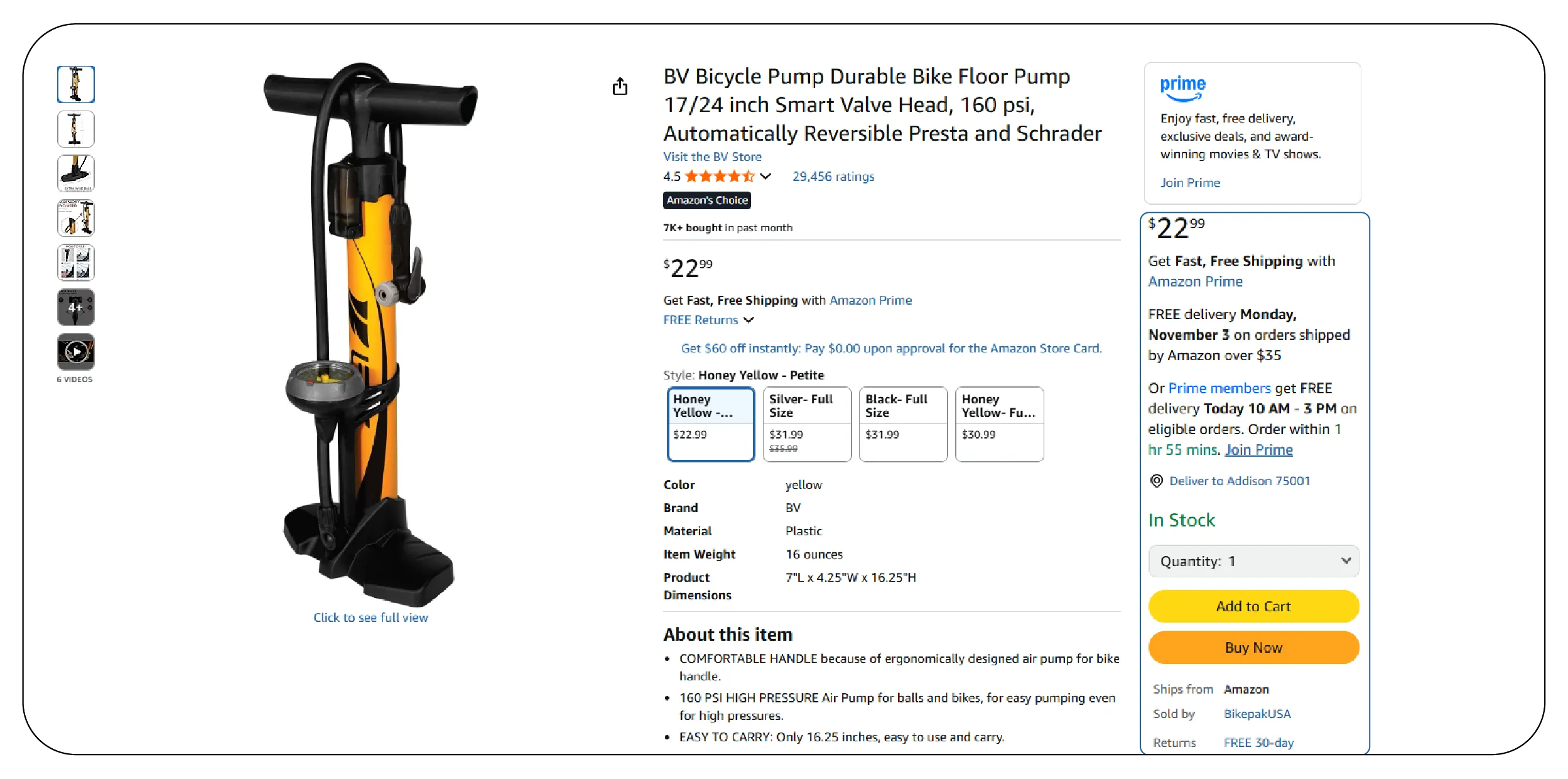
Every organization eventually faces the classic build-versus-buy decision:
should you develop an in-house scraping infrastructure or rely on a managed service provider?
Building internally gives complete control but requires dedicated engineering,
proxy management, compliance handling, and continuous maintenance. Over time, the hidden costs
of debugging, scaling, and updating parsers often outweigh the initial savings.
Buying, on the other hand, provides immediate scalability and compliance.
Managed service providers handle everything — proxy rotation, parser adaptation, error
management, and delivery pipelines — so your teams can focus on analysis instead of upkeep.
For many organizations, the hybrid approach works best: internal data teams
define goals and governance while external providers execute the heavy lifting of extraction.
Partnering with experts who offer pricing intelligence services ensures that
your pricing insights remain accurate, compliant, and timely — while freeing your internal teams
to innovate and act on those insights rather than maintaining the tools behind them.
Deciding between DIY or managed scraping? Choose Product Data Scrape for
reliable, scalable, and compliant Amazon pricing data today!
Contact Us Today!
Trends to Watch in 2025: The Future of Amazon Price Scraping

The landscape of web scraping and data analytics is evolving rapidly. As
Amazon’s platform continues to grow in complexity, new technologies and ethical standards are
transforming how data is collected, processed, and analyzed. The future of Amazon price scraping
lies in smarter automation, compliance, and sustainability.
Artificial intelligence will play a central role in 2025. Expect broader
adoption of AI-driven extraction models capable of adapting to layout changes in real-time.
These systems will continuously learn from structural variations in Amazon’s pages, ensuring
uninterrupted data flow and higher accuracy — even as HTML patterns evolve.
Ethical scraping frameworks will also gain traction. Transparency, compliance,
and consent-based data sourcing will become essential components of any large-scale scraping
operation. Businesses will prioritize legal compliance under GDPR and CCPA while maintaining the
integrity and privacy of collected data.
Machine learning will redefine accuracy benchmarks. Automated validation
systems will detect anomalies, flag outliers, and self-correct extraction errors across millions
of listings. This will make datasets cleaner, more reliable, and analytics-ready from the moment
they are captured.
Another key trend is sustainability in data operations. As environmental
awareness increases, scraping providers will focus on reducing bandwidth waste, optimizing proxy
usage, and minimizing energy consumption — turning efficiency into a measurable competitive
advantage.
The rise of Custom eCommerce Dataset Scraping will allow
companies to design data feeds around specific business KPIs — such as promotional response
times, price elasticity, or product lifecycle tracking — while maintaining full compliance and
precision. This customization will enable businesses to extract only what matters most, reducing
both noise and cost.
2025 will mark a major turning point where price scraping becomes more than a
technical necessity — it becomes a core pillar of competitive intelligence. Businesses that
integrate scalable, ethical, and intelligent scraping pipelines will lead the next era of
eCommerce analytics.
Conclusion
In today’s digital economy, success depends on speed, accuracy, and
adaptability. Amazon price scraping at scale for analytics is no longer a side
project — it’s a business-critical function that fuels data-driven decision-making.
With a professional web scraping partner, organizations can ensure compliance,
reduce costs, and access a continuous stream of clean, verified, and analytics-ready Amazon
data. This enables smarter pricing, improved competitiveness, and measurable ROI.
Whether you’re a brand monitoring MAP violations, a retailer optimizing
promotions, or an analyst forecasting demand trends, the future belongs to businesses that
combine automation, intelligence, and scale in their data strategy.
Partner with Product Data Scrape — the trusted leader in
large-scale eCommerce data extraction. We help you collect, clean, and deliver Amazon pricing
data that drives measurable results. Contact Product Data Scrape today to power
your analytics with precision, compliance, and scalability.






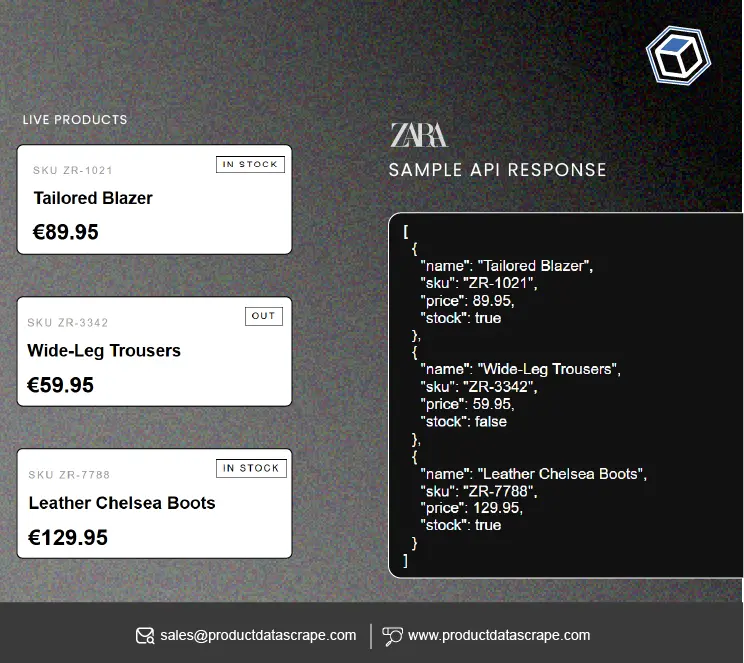


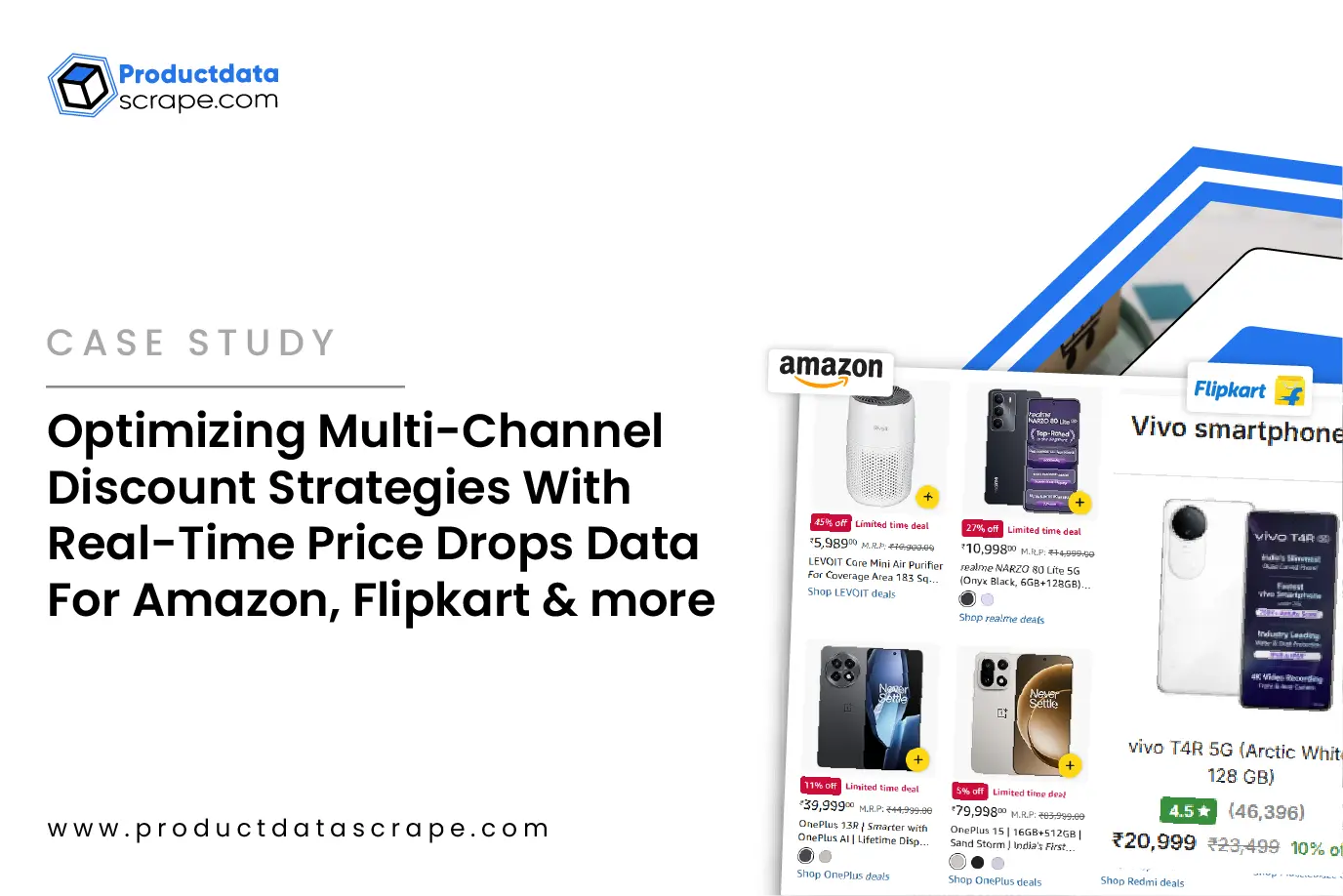










.webp)
-01.webp)

.webp)
